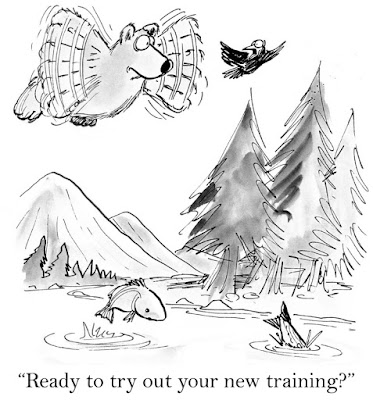As much as we may resolve to adopt new habits, we often fail. According to numbers from the Statistic Brain Research Institute, unless you have a plan to succeed, only 8% of us are actually successful in implementing our New Year’s resolutions. The other 92% may be sincere on January 1st but lack the discipline, lose the motivation, get discouraged, and fail well before year’s end.
It is one thing not to work out as often at the gym as you had hoped, but it is another when you are in charge of changing behavior and performance on the job. To experts involved in new skill adoption and performance improvement in the workplace the consequences of failure can be dire.
Can psychologists help with advice on the successful transfer of training? Here are four reasons behavior does not change for the long-term:
1. Being unrealistic.
Carefully think through your goal and make sure that, with discipline, it is achievable. Too many of our resolutions cannot be realistically achieved. The result? Year after year, we fail and, before long, we enter the false hope cycle. You set an impossible goal; you make some progress but fall far short; yet again, you are unsuccessful. Sure, at first it feels good to have that goal in mind. You feel positive and empowered. But the letdown at failure leaves you lower than before and ever more discouraged…until you make the same resolution the following year.
2. Thinking that change is sudden.
Successful change is often incremental. Break your goal down into achievable parts. Let’s say that you have a goal of increasing revenue by 12% at year-end. You know that by training your sales force in more consultative selling techniques, this goal is attainable. Start by looking at 1% increases every month. The smaller, manageable milestones keep you on track and encourage forward progress. Actual behavior change takes patience. It takes repetitive practice, learning, adjustment and discipline to turn a new skill into a new and successful habit.
3. Underestimating obstacles and not tracking progress.
Change rarely comes without barriers. Make sure your organizational culture strongly exposes and supports the newly desired skills and behaviors. For example, if your goal is to encourage more team collaboration, make sure that performance metrics do not over-measure or over-reward individual success. Sometimes something as simple as setting up the office space so team members have more opportunities to meet with one another easily can improve collaboration. And then, make sure you keep track of and share progress toward your goals. Expose when the new behaviors are (and are not) applied and the associated positive and negative results. Share these with the team so they, too, recognize the consequences of success and failure.
4. Losing faith.
With any substantial change, there will be slip-ups. Don’t lose heart. Keep focused on the goal and adjust as you learn to get where you need to go. You may have missed a step forward in the short-term, but it is the long-term that really matters when trying to transfer skills and behaviors from the classroom to the job.
Learn more at: http://www.lsaglobal.com/lsa-transfer-of-training-methodology

